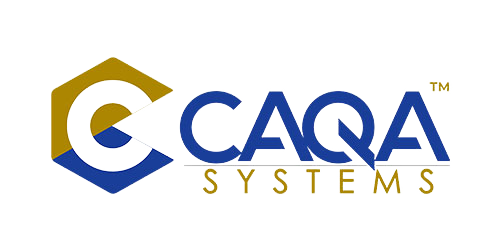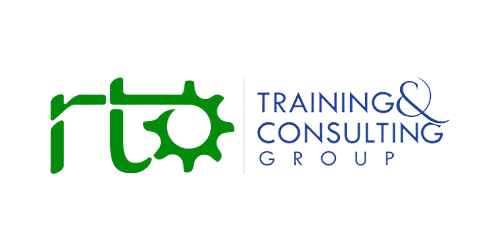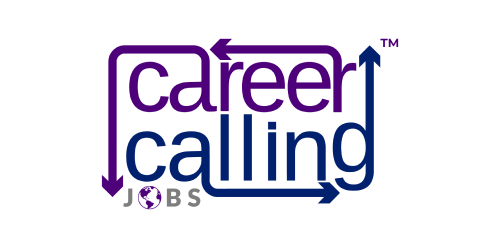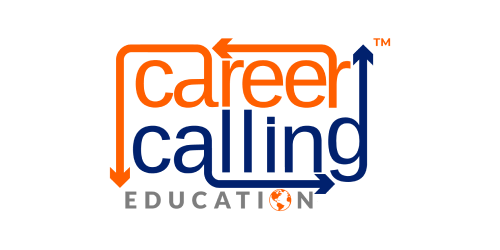In an industrial kitchen, culinary students prepare meals for paying customers while their instructor monitors food quality and timing. In a regional town 600 kilometres away, a would-be chef watches instructional videos alone, unable to find a placement because no local restaurants participate in training programs. Despite completing identical qualifications, these students will enter the workforce with dramatically different capabilities and employment prospects.
This scenario illustrates one of the most pressing challenges facing Australia's VET sector: while work-integrated learning (WIL) represents a transformative approach to skills development, access to quality workplace experiences remains deeply unequal across geographic locations, industry sectors, and student backgrounds.
"The benefits of work-integrated learning are undeniable," explains a VET policy specialist who has studied placement outcomes across multiple sectors. "But these benefits aren't equally distributed. Rural students, those from disadvantaged backgrounds, and learners in emerging industries face significant barriers to accessing the quality workplace experiences that can transform their employment prospects."
Despite widespread recognition of WIL's importance, significant challenges limit its implementation, quality, and impact across Australia's vocational education landscape. Addressing these barriers isn't merely an educational concern but a critical economic and social imperative as the nation grapples with persistent skills shortages and rapid workplace transformation.
The Access Divide: Geography, Sector, and Background
Perhaps the most visible challenge involves dramatically uneven access to quality work-integrated learning opportunities based on location, industry sector, and student characteristics.
The Geographic Lottery
Location creates profound disparities in WIL access and quality. Urban students typically benefit from dense networks of potential placement providers across diverse industries, while rural and remote learners face severely limited options within a reasonable travel distance.
"Living in a regional area shouldn't determine your educational opportunities, but for many VET students, it does exactly that," notes a placement coordinator from a regional provider. "In metropolitan centres, we might have dozens of potential hosts for a healthcare placement. In small communities, there might be one or two facilities, or none at all. The learning experience is completely different."
These geographic disparities contribute to the 15% lower VET completion rates in non-metropolitan areas documented by the National Centre for Vocational Education Research (NCVER). Students in remote areas often face impossible choices: relocate temporarily for placements at significant personal and financial cost, accept limited local options that may not offer comprehensive learning experiences, or abandon their studies entirely when placement requirements prove unattainable.
Industry Sector Variations
Access challenges extend beyond geography to include substantial variations across industry sectors. Some fields have well-established WIL traditions and infrastructure, construction's apprenticeship system, healthcare's clinical placement networks, while emerging or rapidly evolving sectors often lack comparable structures.
Digital technology, renewable energy, advanced manufacturing, and creative industries frequently face particular challenges, with fewer standardised pathways and greater reliance on individual provider-employer relationships. A 2022 Australian Skills Quality Authority (ASQA) audit found that placement quality and availability varied by up to 40% between traditional and emerging sectors, creating uneven development of work-integrated learning despite similar potential benefits.
"In traditional trades, we have generations of experience with apprenticeship systems," explains an industry training manager. "But in emerging fields like cybersecurity or renewable energy installation, we're still developing those frameworks. Meanwhile, students in these high-growth areas often receive less structured workplace learning despite entering rapidly evolving industries where practical experience is particularly valuable."
Student Characteristic Barriers
Individual student characteristics create additional layers of access challenge. International students face barriers including visa work restrictions, limited professional networks, and occasional employer hesitation about language or cultural differences. Students with disabilities may encounter physical access limitations or attitudinal barriers despite legal protections and potential workplace accommodations.
Those from disadvantaged backgrounds often lack transport, appropriate work attire, or flexible schedules to accommodate placement requirements. Without targeted support, these barriers can prevent precisely those students who might benefit most from the employment advantages WIL provides.
"For many students, particularly those who are first in their family to study or from lower socioeconomic backgrounds, the hidden costs of placements create significant barriers," notes a student support coordinator. "Transport to placement sites, appropriate clothing, meals while on placement, these expenses aren't covered by study loans and can make participation impossible for students already struggling financially."
The Quality Inconsistency Challenge
Even when students access workplace learning opportunities, quality variations create another significant challenge, with substantial differences in implementation, supervision, and learning outcomes across providers and programs.
A 2022 ASQA audit of 200 RTOs found approximately 25% had substandard work-integrated learning arrangements, including placements unrelated to qualification requirements, inadequate supervision or mentoring, and insufficient integration between workplace experience and classroom learning. These quality issues undermine both educational outcomes and qualification credibility.
"The quality gap in work-integrated learning is arguably even more concerning than access issues," states a quality assurance specialist. "Poor quality placements don't just fail to deliver the intended benefits, they can actually create negative outcomes by teaching inappropriate practices, damaging student confidence, or failing to develop essential capabilities that employers expect from graduates."
Several factors contribute to these inconsistencies:
Provider capability varies significantly, with some institutions possessing dedicated WIL coordination staff, established employer networks, and systematic quality assurance processes, while others, particularly smaller private RTOs, may lack specialised expertise or resources for effective implementation.
Employer supervision capacity differs dramatically between organisations. While some workplaces have established systems for supporting learners with trained supervisors, structured learning progressions, and regular feedback mechanisms, others may provide limited guidance or inappropriate responsibilities that don't align with learning objectives.
Regulatory frameworks and standards, while establishing baseline requirements, often lack sufficient specificity regarding quality dimensions such as supervision ratios, minimum workplace exposure hours, required learning activities, or assessment validation processes. This regulatory ambiguity allows significant variation in implementation approaches while creating challenges for consistent compliance monitoring.
"Quality work-integrated learning isn't just about placing students in workplaces; it requires careful design, appropriate supervision, meaningful tasks, regular feedback, and authentic assessment," explains an educational designer specialising in workplace learning. "When any of these elements is missing or inadequate, the learning experience is compromised, potentially leaving students with gaps in essential capabilities despite completing formal requirements."
The Resource Constraint Reality
Resource limitations represent another critical barrier to effective work-integrated learning implementation across the VET sector. Funding models often inadequately address the substantial costs associated with quality WIL coordination, including employer relationship management, student preparation and support, quality assurance processes, and administrative systems.
The Productivity Commission has documented a decade-long decline in VET funding in real terms, creating particular challenges for resource-intensive components like work-integrated learning. These constraints manifest as insufficient dedicated staffing for WIL coordination, limited capacity for workplace supervisor training, and inadequate systems for matching students with appropriate opportunities.
"Coordinating quality work-integrated learning is complex, time-intensive work that requires specialised skills," notes a WIL program manager. "When funding constraints force us to treat this as a side responsibility for teaching staff already carrying full loads, quality inevitably suffers. Effective implementation requires dedicated resources; it's not something that can be done properly as an add-on to other responsibilities."
Employers, particularly small and medium enterprises, face their own resource challenges in supporting work-integrated learning. Supervision time represents a significant investment that may reduce short-term productivity, especially for organisations with limited staff capacity. Administrative requirements for documentation, assessment, and reporting create additional workload without direct compensation in many cases.
"Small businesses want to support the next generation of workers, but the practical realities create barriers," explains a business association representative. "Taking time away from productive work to mentor students, complete paperwork, and manage assessment requirements is a genuine cost, especially when you're running lean operations with limited staff. Without financial support or recognition, many employers simply can't justify the investment despite seeing its long-term value."
Students themselves often encounter financial barriers to participation, especially for unpaid or minimally compensated arrangements. Living expenses during placement periods, transport costs to workplace locations, and appropriate clothing or equipment purchases can create significant hardship. Without adequate financial support, these practical constraints can prevent participation or reduce learning quality as students balance placement requirements with employment necessary for basic living costs.
Building Solutions: Strategic Approaches to WIL Enhancement
Despite these significant challenges, innovative approaches are emerging to expand access, improve quality, and create sustainable WIL models across the VET sector. These strategic solutions offer promising pathways for enhancing work-integrated learning implementation and outcomes.
Expanding Access Through Innovation
Several approaches are successfully expanding access to quality work-integrated learning for students regardless of location, background, or field of study:
Regional partnership models bring together multiple employers, education providers, and community organisations to create sustainable WIL ecosystems in areas with limited individual capacity. These collaborative arrangements might include shared supervision approaches where students rotate between several small employers, coordinated placement schedules that distribute learners across available opportunities, or joint funding for dedicated coordination roles.
A successful example comes from regional Victoria, where a healthcare training partnership brings together hospitals, aged care facilities, community services, and primary care providers across three shires. This collaborative approach creates diverse placement opportunities despite limited individual capacity, while a shared placement coordinator position reduces the administrative burden on individual organisations.
Mobile delivery approaches bring training and work simulation to underserved areas rather than requiring student relocation. These might include equipped vehicles offering hands-on learning in rural communities, pop-up training facilities in regional centres, or temporary workplace setups within community facilities.
"Our mobile training unit visits five remote communities on a regular rotation, bringing industry-standard equipment and expert trainers directly to students," describes the coordinator of a mobile construction training program. "Students complete foundational skill development locally, then need only shorter placements with employers for final competency demonstration. This approach has tripled completion rates in remote communities while creating sustainable pathways into apprenticeships."
Technology-enhanced alternatives complement traditional placements with virtual and augmented approaches that expand access beyond geographic limitations. Virtual reality simulations allowing practice of complex procedures, remote supervision technologies enabling distant expert guidance, and collaborative platforms connecting students with industry mentors regardless of location all extend opportunities beyond physical placement capacity.
While not completely replacing in-person experience, these approaches can enhance access, particularly for specialised fields or remote locations. A digital health initiative in Queensland, for example, uses telepresence robots to allow nursing students to participate remotely in clinical rounds at major hospitals, complementing their local placements with exposure to complex cases and specialised contexts otherwise inaccessible in regional areas.
Targeted support programs address specific barriers facing disadvantaged learners, including financial assistance for transport and equipment costs, accommodation arrangements for students with disabilities, language support for culturally diverse learners, and scheduling flexibility for those with caring responsibilities.
"We established a placement support fund that provides transportation vouchers, uniform stipends, and occasional emergency assistance for students experiencing financial hardship," shares a student services manager from a major provider. "These relatively small investments, averaging under $500 per student, have increased placement completion rates by 35% among our most vulnerable learners, demonstrating that practical barriers often have practical solutions when adequately resourced."
Quality Enhancement Through Standards and Support
Improving work-integrated learning quality requires comprehensive approaches that establish clear standards while building capability across the system:
Comprehensive quality frameworks define minimum standards and best practices for different WIL models, specifying elements like required workplace exposure duration, supervision arrangements, learning activity design, assessment approaches, and integration with classroom components. These frameworks balance sufficient specificity for consistent implementation with appropriate flexibility for different contexts.
An exemplary approach comes from the healthcare sector, where national clinical placement quality frameworks specify supervisor qualifications, student-to-supervisor ratios, required learning activities, assessment approaches, and quality verification processes. Similar frameworks are now emerging in other sectors, creating clearer expectations while allowing contextual adaptation.
Workplace supervisor development represents a critical quality dimension often overlooked in current systems. Structured training programs for those supervising students, addressing learning facilitation, effective feedback, appropriate task progression, and assessment approaches, can significantly enhance experience quality while supporting supervisors in their educational role.
"We developed a micro-credential for workplace supervisors that covers learning facilitation, effective feedback, and assessment approaches," explains a professional development coordinator. Completing this program not only improves supervision quality but also provides formal recognition that employers value. Over 2,000 supervisors have completed the program in its first year, creating a growing network of qualified workplace educators across our region.
Provider capability building addresses the specific knowledge and skills required for effective WIL coordination and management. Professional development for staff responsible for work-integrated learning covers relationship management with industry partners, quality assurance processes, support systems for students with diverse needs, and integration of workplace experiences with broader learning programs.
Communities of practice connecting WIL coordinators across institutions facilitate knowledge sharing and collaborative problem-solving beyond what individual providers might achieve independently. A national online platform now connects over 500 WIL coordinators across Australia, supporting resource sharing, problem-solving discussions, and collaborative development of innovative approaches.
Student preparation and support have been strengthened through pre-placement orientation, addressing workplace expectations, professional communication, problem-solving approaches, and reflective practice. During placements, structured check-ins and support mechanisms identify and address challenges before they compromise learning outcomes.
Sustainable Funding Models for Long-Term Success
Creating sustainable funding approaches for quality work-integrated learning represents a crucial priority for system enhancement:
Provider funding mechanisms should explicitly recognise WIL coordination costs rather than treating workplace components as cost-neutral. Funding models should consider factors like industry complexity, geographic dispersion, student support needs, and regulatory requirements that affect coordination costs across different contexts.
Performance-based components might reward successful outcomes like completion rates, employment results, and employer satisfaction while maintaining base funding for essential coordination activities. Several state jurisdictions are experimenting with WIL-specific funding components that acknowledge these additional costs while incentivising quality outcomes.
Employer incentives acknowledge and partially offset the real costs of providing quality workplace learning opportunities. These might include direct subsidies for supervision time, tax incentives for WIL participation, recognition in government procurement processes, or support for infrastructure and equipment needed for student participation.
"Our industry-funded supervision support program provides $2,000 per apprentice to small businesses, recognising the genuine productivity impact of quality supervision," explains an industry association executive. "This modest investment has increased small business participation by 40% while improving the quality of workplace learning through reduced financial pressure on supervisors."
Student support funding addresses the practical barriers to WIL participation, particularly for disadvantaged groups. This support might include living allowances during unpaid placements, transport subsidies for rural and remote students, equipment grants for required materials, and accommodation assistance for placements requiring relocation.
Industry co-investment models establish shared responsibility for workforce development costs through approaches like training levies within specific sectors, joint funding arrangements between government and industry bodies, or cooperative structures where multiple employers contribute to shared training infrastructure.
Coordinated Leadership for Collective Impact
Effective work-integrated learning at scale requires coordinated action across traditionally separate domains, including education, industry, and government:
Cross-sector governance structures bring together representatives from training providers, industry bodies, government agencies, and student organisations to develop shared strategies, establish common standards, and monitor implementation progress. These collaborative bodies exist at both the national level for system-wide coordination and the regional levels to address local workforce needs.
A successful example comes from a regional skills development coalition that brings together TAFE, private RTOs, employer groups, and local government to coordinate WIL implementation across multiple industries. This collaborative approach has dramatically increased placement availability while establishing shared quality standards and support resources that benefit the entire regional training ecosystem.
Data systems and research provide insight into WIL implementation, quality, and outcomes to guide continuous improvement. Systematic collection of information about placement availability, student participation, quality indicators, and employment outcomes highlights both successful approaches and areas requiring intervention.
"We established a regional WIL data dashboard that tracks placement demand, availability, and outcomes across multiple providers and industries," describes a regional development officer. "This shared visibility has transformed our coordination, helping identify gaps and opportunities while focusing resources where they're most needed. The data also provides powerful evidence for advocacy and funding proposals, highlighting both challenges and successful interventions."
Policy coordination across education, employment, industry development, and regional agencies creates coherent frameworks rather than fragmented approaches addressing single dimensions of work-integrated learning. This coordination aligns qualification requirements, funding mechanisms, quality standards, and industry engagement initiatives to create mutually reinforcing rather than conflicting incentives.
The Imperative for Action: Why Getting WIL Right Matters
Work-integrated learning represents not simply an educational methodology but a transformative approach to skill development that directly addresses Australia's most pressing workforce challenges. By bridging the persistent gap between training and employment, WIL creates multiple benefits: students develop practical capabilities and workplace understanding that enhance their employment prospects; employers access talent pipelines while influencing training relevance; and the VET system achieves stronger completion and employment outcomes.
The stakes of getting work-integrated learning right extend far beyond educational effectiveness to encompass economic prosperity, social mobility, and industry sustainability. A 2021 Deloitte report estimated that enhanced skill development through effective work-integrated learning could add $40 billion to Australia's GDP by 2030 through productivity improvements, reduced skills mismatches, and faster workforce adaptation to technological change.
For individual learners, quality WIL can mean the difference between sustainable employment and precarious work, between career advancement and stagnation, between thriving and merely surviving in a rapidly changing labour market. For employers, it represents the difference between hiring work-ready graduates who contribute immediately and spending months developing basic workplace capabilities in new employees. For Australia's economy, it may determine whether the nation can develop the skilled workforce needed to remain competitive in an increasingly knowledge and skill-intensive global marketplace.
"Work-integrated learning isn't just about better education, it's about building Australia's future workforce capability," emphasises a workforce development specialist. "As technology transforms industries and global competition intensifies, our economic prosperity depends on developing not just qualified but truly capable graduates who can apply their skills effectively across diverse contexts. WIL is the bridge between qualifications and capabilities that makes this possible."
By expanding innovative models, establishing clear quality frameworks, developing sustainable funding mechanisms, and creating coordinated governance structures, Australia can build a world-leading work-integrated learning system that maximises individual opportunity and economic benefit. This transformation requires commitment and investment from all stakeholders, training providers, employers, government agencies, and industry bodies, working together toward shared objectives.
As that culinary student in the regional town watches another instructional video, the urgency of addressing these challenges becomes clear. Her educational experience should not be determined by geographic lottery, sector variation, or background barriers. With coordinated action and strategic investment, Australia can ensure that all VET students, regardless of location, field of study, or personal circumstances, have access to the transformative power of quality work-integrated learning. Their future careers and Australia's economic prosperity depend on it.


































